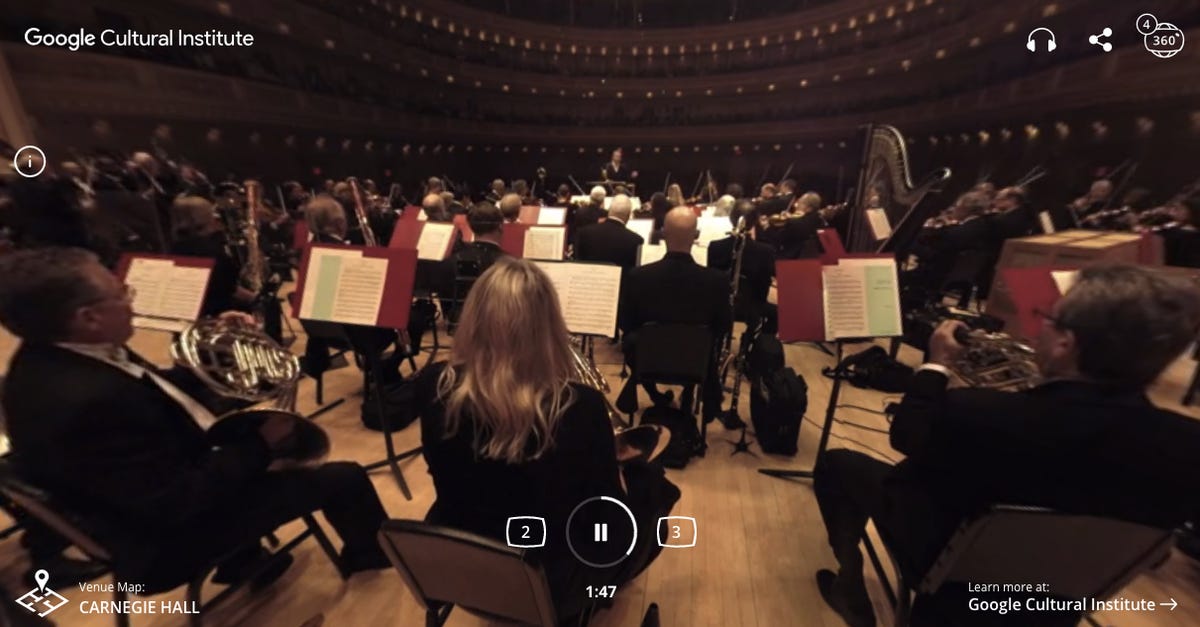NEW YORK — Get immersed in a Wagner opera while waiting in a supermarket line or catch a Carnegie Hall orchestral performance on the train.
For most of us, it’s hard to find the time and money for a trip to the ballet. So, the Google Cultural Institute and a group of over 60 performing arts institutions around the world have decided to come to the public for free.
The search giant on Tuesday said it partnered with dance, music and drama organizations to create online performing arts exhibits that include thousands of photos, videos and documents. Among the pieces are 360-degree videos that put viewers shoulder-to-shoulder with opera singers at Theatro Municipal in São Paulo or beside the brass section at the Berliner Philharmoniker in Berlin. The exhibits became available to the public Tuesday amid media events in New York, Paris, Berlin, São Paolo and London.
“I think what you see is the beginning of a total revolution about the future,” Clive Gillinson, executive and artistic director of Carnegie Hall, said at a media event at Carnegie on Tuesday. “The best of everything around the world will be able to be shared.”

A view onstage at Carnegie Hall with the Philadelphia Orchestra, part of a 360-degree video by the Google Cultural Institute.
Google Cultural Institute
The new project, which is free for art institutions to use, has the potential to introduce new audiences to artistic performances, bringing such works to the broader public through their smartphones and laptops. The effort could help create new ways to disseminate performing arts pieces using 360-degree cameras and perhaps even virtual reality goggles, such as Google’s Cardboard VR headset.
The Google Cultural Institute started in early 2011 as an effort by the Mountain View, California, company to keep up its core mission of making the world’s information readily searchable and accessible. The institute started by posting high-resolution photographs of paintings and archival documents on the Web. It has since spread to include world wonders, historic events and street art.
Piotr Adamczyk, the Google institute’s program manager, said technology needed to catch up to the concept of recording performance pieces in more immersive ways. Thanks to 360-degree cameras, which have been used to capture city streets for Google’s Street View project, people can now experience performances right onstage and look all around the scene by pointing their smartphones in different directions.


Testing out Google Cultural Institute’s new performing arts exhibits at Carnegie Hall on Tuesday.
Ben Fox Rubin/CNET
In one 3-minute 360-degree video, viewers can take in the Philadelphia Orchestra’s booming rendition of Grieg’s “In the Hall of the Mountain King” from three separate spots onstage at Carnegie, watching the violinists and percussionists up close as the music reaches a crescendo.
“You can have bite-sized experiences that are also compelling,” Adamczyk said. “You can have small interactive moments that are valuable. And also there’s a lot more going on onstage than what you’re actually able to see” from the audience.
The Google project includes works from the American Ballet Theatre, Brooklyn Academy of Music, Country Music Hall of Fame and Museum, John F. Kennedy Center for the Performing Arts and Metropolitan Opera.
Along with those major cultural institutions, the American Museum of Magic joined the project. The museum, housed in a two-story storefront in Marshall, Michigan, is sharing a collection of high-resolution pictures of decades-old magic performance posters. It hopes to add more documents as well as videos of magic tricks to the project soon.
“This is just the tip of the iceberg,” Amy Reimann, vice chairwoman of the museum, said at Tuesday’s event. “The more you can show people [the more they] want to come.”




